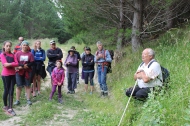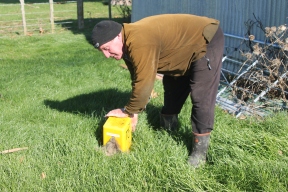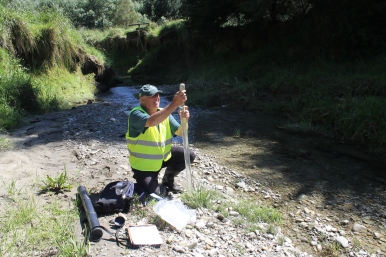The Whangawehi Catchment Management Group is actively looking at increasing the scope of its pest control programme. With assistance from the Hawkes Bay Regional Council the WCMG has been selected as a pilot project to trial 25 new state of the art traps.
These pest control traps are designed to send a signal to a hub located on a high point in the catchment every time a pest is caught. This data is then sent to the landowners via an application on their mobile phones which alerts them to when and where the traps have been triggered.
This technology could potentially change the face of pest control in the future by significantly reducing maintenance costs, especially in very difficult and rugged terrain. Contractors would only need to be sent in on targeted trap lines when a set percentage of traps have been set off. This differs from the traditional maintenance techniques which consist of checking and maintaining the traps on a monthly basis, whether the traps have been sprung or not.
This new wireless leading edge technology added to the new long lasting baits/lures (which last up to twelve months) makes this trial relevant to our steep and remote Mahia hill country. If successful these traps will play a key role in pest control challenges ahead. Over the past two years the group has established 70,000 trees and noticed a steep increase in birdlife. This pest control programme would play an instrumental role in protecting the ever increasing wildlife that is coming back to the area at a significantly lower cost.
The WCMG want to thank Grandy Lake Forest and Taharoa Trust for their co-operaton in trialling these new technology traps and HBRC for allowing us to be part of the trial.











































































